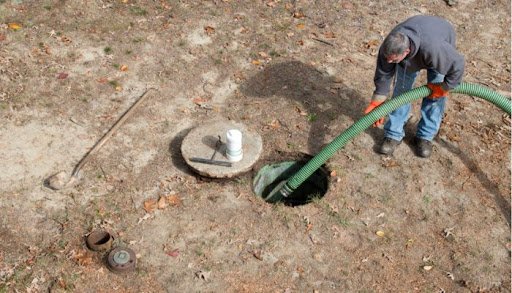The Definitive Guide for Stillwell Septic And Grading
Table of ContentsSome Known Details About Stillwell Septic And Grading The Definitive Guide for Stillwell Septic And GradingStillwell Septic And Grading Fundamentals ExplainedRumored Buzz on Stillwell Septic And GradingStillwell Septic And Grading - The FactsGetting The Stillwell Septic And Grading To WorkA Biased View of Stillwell Septic And Grading
In general, septic system setup is an intricate procedure that needs careful planning and implementation. House owners ought to function with a trusted installation group and recognize neighborhood policies and requirements to guarantee that their septic tank operates appropriately for several years to find. After the sewage-disposal tank has been installed and attached to the drainpipe field, it is time to backfill the area.The backfill material should be cost-free of clods, big rocks, frozen issue, and particles that can lead to gaps in the backfill that might allow clearing up in time. Squashed rock or pea gravel 1/2-inch in size is favored if indigenous products are not proper. When the backfilling is complete, it is time to landscape the area.
Once the septic tank has been installed, it is important to check it to ensure that it is functioning properly (Septic Tank Repairs). https://www.metal-archives.com/users/stillwellsag. Checking the system involves looking for leakages, guaranteeing that the container goes to the suitable level, and checking out the drainpipe field. One of the most usual examinations executed is the hydraulic lots examination
A Biased View of Stillwell Septic And Grading
The water is then checked to guarantee that it flows properly through the pipes and into the drain area. If the water does not move appropriately or supports right into the storage tank, it may indicate a problem with the system. Another test that is commonly carried out is the color examination.
The color is then checked to make certain that it streams correctly with the pipelines and into the drain area. If the color does not stream correctly or shows up in the incorrect location, it may show a trouble with the system. It is important to have a professional do these examinations to make sure that they are done properly.

Top Guidelines Of Stillwell Septic And Grading
Here are some important ideas for home owners to maintain their septic tank: The average home septic system ought to be inspected at the very least every three years by a septic service professional. The frequency of pumping depends on the dimension of the container and the number of people utilizing it. https://yoomark.com/content/httpswwwstillwellsepticco. A basic guideline is to pump the storage tank every three to 5 years
Using water-efficient fixtures and appliances, such as low-flow showerheads and commodes, can reduce water use and aid the septic tank job extra successfully. Just flush bathroom tissue and human waste down the bathroom. Prevent flushing anything else, including feminine hygiene products, child wipes, and food preparation grease, as they can clog the system.
The Single Strategy To Use For Stillwell Septic And Grading
Septic system installment is an intricate procedure that needs careful preparation and execution. Property owners must recognize the essential actions associated with the installment procedure to make certain my link that their septic tank works properly and efficiently. The primary step is to examine the site where the septic tank will be mounted.
The dirt type will certainly affect just how swiftly wastewater is absorbed and filtered. As soon as the site has actually been assessed, the following action is to get ready for the installation. This includes getting the necessary authorizations and examinations, as well as choosing the best contractor for the task. Homeowners need to ensure that their specialist is experienced in sewage-disposal tank installation and will certainly function along with them throughout the process.
The Best Strategy To Use For Stillwell Septic And Grading

Home owners must recognize the necessary steps entailed in the installation process to ensure that their septic system operates effectively and successfully. By following these steps and preserving their system, property owners can rest guaranteed that their septic system will give trustworthy wastewater treatment for years ahead.
Virtually one in 5 U.S. homes have septic systems. Yours may be among them. If you're not correctly keeping your septic system, you're not just harming the setting, you're placing your family's wellness at riskand may be purging thousands of bucks down the drain! Do Your Component, Be SepticSmart: The Do's and Do n'ts of Your Septic tank.
Stillwell Septic And Grading for Beginners

All that additional water can truly strain your septic system. This can be handy specifically if your system has not been pumped in a lengthy time.
Some Known Incorrect Statements About Stillwell Septic And Grading
Know your system's place. When you have the container pumped, draw a layout or map revealing its location in relationship to fixed points - edges of the house, steps, or fence blog posts.
Decrease the amount of wastewater that have to be treated and disposed of by your system: Wash no more than one or 2 tons of clothing daily. Up to 53 gallons of water flooding your septic system with each tons, so it's finest to spread out laundry out over the week.